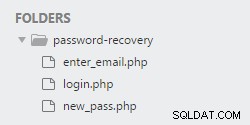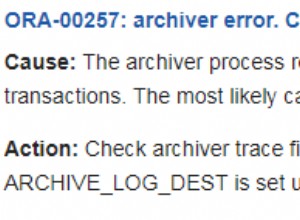Il cursore statico esegue la copia del set di risultati in memoria al momento della creazione del cursore e utilizza quel set di risultati temporaneo per restituire le righe . Se vengono apportate modifiche ai dati della tabella/e originale, come inserimento, aggiornamento o eliminazione. Il cursore statico non aggiorna il set di risultati memorizzato con tali modifiche a meno che non chiudiamo il cursore e riapriamo.
I cursori statici sono scorrevoli (primo, ultimo, precedente, successivo, relativo, assoluto)
Script per il cursore statico in SQL Server utilizzato anche nel video.
--drop table dbo.Customer
Create table dbo.Customer (
CustomerId Int Identity(1,1),
CustomerName VARCHAR(100),
StreetAddress VARCHAr(100),
City VARCHAR(100),
State CHAR(2))
go
--Insert couple of Records in Sample Table
Insert into dbo.Customer
Select 'Aamir shahzad','Test Street Address','Charlotte','NC'
Union
Select 'M Raza','Test Street Address','Charlotte','NC'
Select * from dbo.Customer
--Insert NEW Record
Insert into dbo.Customer
Select 'John Smith','Test Street Address','New York City','NY'
--Delete Records
Delete from dbo.Customer
Where CustomerName in ('Aamir Shahzad','M Raza')
--Update All Record
Update dbo.Customer
set CustomerName='NO NAME'
--Cursor Script
Declare @CustomerID INT
Declare @CustomerNAme VARCHAR (100)
DECLARE @StreetAddress VARCHAR(100)
DECLARE @City VARCHAR(100)
DECLARE @State CHAR(2)
--DECLARE A CURSOR
DECLARE CUR CURSOR
STATIC
FOR
Select CustomerID,CustomerName,StreetAddress,City,State from dbo.Customer
--OPEN CURSOR
OPEN CUR
Print 'CURSOR IS OPEN'
--FETCH NEXT RECORD
FETCH NEXT FROM CUR INTO @CustomerID,@CustomerNAme,@StreetAddress,@City,@State
WHILE @@FETCH_STATUS=0
BEGIN
RAISERROR ('',0,1) WITH NOWAIT
WAITFOR DELAY '00:00:15'
PRINT CONCAT(@CustomerID,' ',@CustomerNAme,' ',@StreetAddress,' ',@City,' ',@State)
FETCH NEXT FROM CUR INTO @CustomerID,@CustomerNAme,@StreetAddress,@City,@State
END
CLOSE CUR
DEALLOCATE CUR Video dettagliato sul cursore statico in SQL Server.




